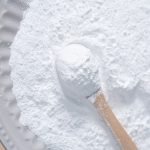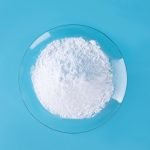Category: Polytetrafluoroethylene (PTFE) Teflon Material
Polytetrafluoroethylene (PTFE) is a synthetic fluoropolymer of tetrafluoroethylene that has numerous applications due to its unique properties. It was discovered by accident in 1938 by a chemist named Roy Plunkett while he was working on developing a new refrigerant. PTFE is commonly known by the brand name Teflon, which is owned by the chemical company DuPont.
PTFE is a highly non-reactive and thermally stable material that is resistant to most chemicals, including acids and bases. It has a very low coefficient of friction, making it an excellent choice for use in applications where low friction is desired, such as in bearings and seals. PTFE is also an excellent electrical insulator, making it useful in electrical applications.
One of the most well-known applications of PTFE is in non-stick cookware. The non-stick properties of PTFE are due to its low surface energy, which prevents food from sticking to the surface of the cookware. PTFE is also used in other applications where non-stick properties are desired, such as in the coating of medical devices and in the manufacturing of gaskets and seals.
PTFE is also used in the aerospace industry due to its high temperature resistance and low coefficient of friction. It is used in the manufacture of components for aircraft engines, such as seals and bearings. PTFE is also used in the construction of space suits due to its ability to withstand extreme temperatures and its non-stick properties.
In addition to its use in non-stick coatings and aerospace applications, PTFE is also used in the manufacturing of various other products, such as computer cables, automotive parts, and industrial coatings. It is also used in the production of Gore-Tex fabric, which is a waterproof and breathable material used in outdoor clothing and footwear.
In conclusion, PTFE is a versatile material with unique properties that make it useful in a wide range of applications. Its non-reactive nature, low coefficient of friction, and high temperature resistance make it an excellent choice for use in non-stick coatings, aerospace components, and other industrial applications.
Processing and Application of PTFE Micropowder

Polytetrafluoroethylene (PTFE) micropowder is a white, fine particle material obtained from low molecular weight PTFE. It can be used as an additive in plastics, inks, coatings, lubricants, and greases to improve the non-stickiness and wear resistance of the base material. It can also be used alone to enhance various properties. PTFE micro-powder is an important functional material, and its processing and application methods require attention to several points: Processing Methods (1) Compression molding: compress PTFE micro-powder into various shapes suchRead More …
Where To Buy PTFE Powder ?

PTFE (polytetrafluoroethylene) powder is a synthetic fluoropolymer commonly used in industrial applications such as coatings, sealants, and lubricants. It is known for its excellent chemical resistance, low friction, and high temperature tolerance, making it a popular choice in many industries. Where to buy PTFE powder ? If you are looking to buy PTFE powder, there are several options to consider. One option is to purchase from online chemical suppliers. Companies like Sigma-Aldrich, Fisher Scientific, and Amazon Business offer a wideRead More …
How to Choose PTFE Micropowder? The Master Tells You These 5 Tips

PTFE micro powder is an important polymer material with properties such as corrosion resistance, wear resistance, and high temperature resistance. It is widely used in plastic processing, coatings, electrical insulation, building materials, and other fields. How to choose the appropriate PTFE micro powder has become a concern for many companies and consumers. Here are some suggestions for choosing PTFE micro powder: Excellent quality The quality of PTFE micro powder directly affects the performance and service life of the product. GenerallyRead More …
- 1
- 2
